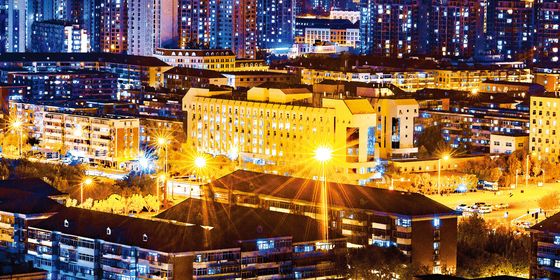Don’t just nod along to your next PM2.5 talk: Let’s break down what smog actually is and where it comes from
Living in Beijing eventually leads to a comfortable familiarity with smog, or at least what to do when it rolls in. Residents turn up their air purifiers, dutifully don their uncomfortable 3M masks, and read articles that describe the dangers of extended exposure to smog. Yet, as the basic details of what smog actually is are often omitted from the typically circulated information about smog, and as you eruditely nod at the cheery news of your cancer risk, you’re really wondering: How does smog occur? What is PM2.5? How does smog occur? Isn’t Smög the name of an Ikea product?
If not Ikea, where does the word come from?
“Smog” is a portmanteau word derived from the words “smoke” and “fog”. The folk etymology states that the term was coined during the Industrial Revolution in Britain, when factory smoke and normal London weather patterns produced smoke-fog, or smog.
How do they contract this unholy marriage?
Pollutants and air, the basic components of smog, are combined in humid atmospheric conditions. There are chemical compounds which do not go into smog itself, but assist in chemical reactions that create smog. For example, nitrogen oxides have been found to be important in the wintertime development of smog. What makes smog loom over a specific geographical area is a process called temperature inversion. During this process, cool and dense air containing pollutants can become trapped by a mass of warmer, less dense air. This is a stable state, which sounds like good news, except that it means the cold smoggy air cannot rise over the warm air, which results in days, even weeks, of stagnating smog.
What am I breathing and/or tasting?
The smoke in smog can consist of a variety of pollutant chemicals. One characteristic of smog that is vigilantly monitored is the concentration of PM2.5. PM2.5, not itself a type of chemical, refers to particles that are smaller than 2.5 micrometers. One micrometer, also called a micron, is a standard unit of measurement equal to one thousandth of a millimeter. For comparison, most bacteria are between one and ten micrometers in diameter. The tiny particles are cause for concern due to their propensity for entering living tissue and staying inside the human body for a long time, if not forever. PM10 is also monitored, with concentration safety levels reported alongside PM2.5 on Aqicn.org and assorted air quality apps. Sulfur dioxide is also monitored, since it is the chemical compound that was found, in combination with PM2.5 particles, to have caused several thousand deaths in London’s Great Smog of 1952.
No, I mean, what’s that smell?
Smog pollutants come from a variety of sources. Car exhaust is one source; governments all around the world try to regulate car use and develop pollutant-reducing technology. Another source is factory pollution, which can come from any kind of industrial process such as the production of paper, steel, cement, or chemicals, or from generating power. The burning for coal for personal use, such as heating or cooking, is another contributor to smog.
However high your passion for learning is—for instance, if you want to know about why research about smog is so difficult—remember to keep practicing safe breathing. And let us hope for less temperature inversion in the coming weeks.












